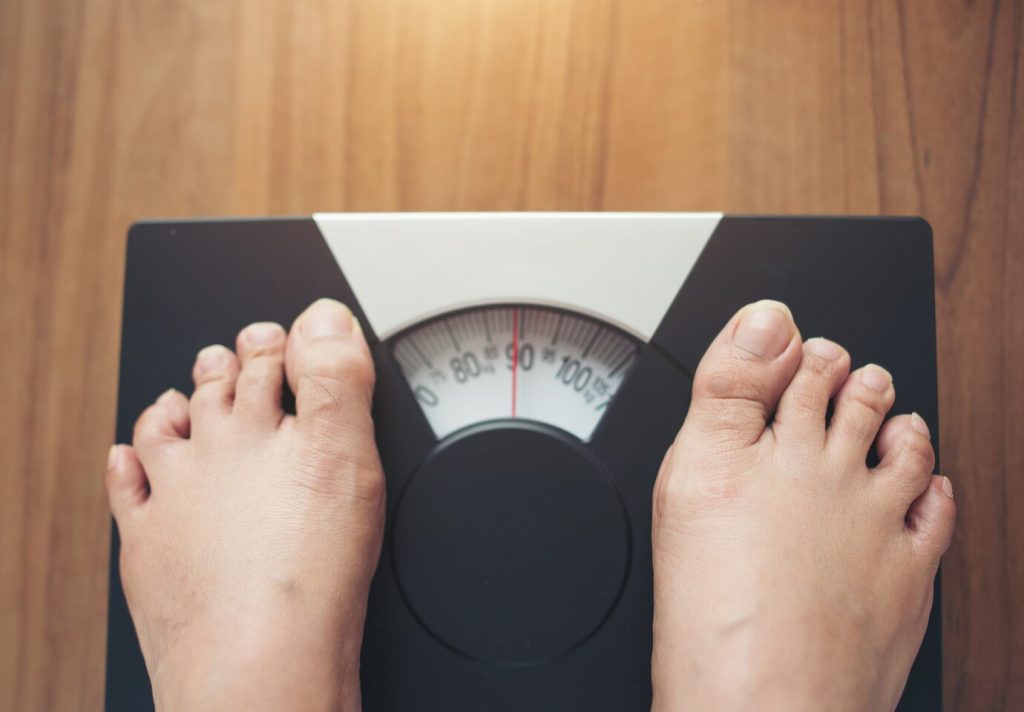The numbers behind better health. It’s more than just the scale.
A recent report from NPD Group, Eating Patterns in America, shows that 57% of American adults want to lose 20 pounds or more. This desire for weight loss isn’t surprising, as more than 60% of Americans are considered overweight or obese, according to the Centers for Disease Control and Prevention.
So, how do you determine your “magic number” for optimal health?
“There’s no one-size-fits-all when it comes to weight loss goals,” says Heidi Stroessner-Johnson, M.D., an internal medicine doctor at Mills-Peninsula. “It varies from person to person.”
Factors like family history, genetics, body frame, medical conditions, pregnancy, and lifestyle all influence what a healthy weight should look like for you.
As we age, some weight gain can feel inevitable. “Most Americans gain about a pound a year starting in midlife,” says Karen Handy, adult weight management director at Palo Alto Medical Foundation. “As we get older, we lose lean muscle tissue, which is important for metabolism. This causes our bodies to burn fewer calories, and even with the same diet, we can start gaining weight.”
How Much Weight is Too Much?
“When helping patients determine a healthy weight, I consider many factors,” Dr. Stroessner-Johnson explains. “A good starting point is Body Mass Index (BMI).” BMI is a simple calculation based on height and weight that helps measure body fat.
-
A BMI between 18 and 25 is considered a healthy weight range.
-
A BMI over 26 may indicate overweight.
-
A BMI over 30 is typically categorized as obese.
Shape Matters
“People with an ‘apple’ shape, carrying weight in their midsection, face higher health risks than those with a ‘pear’ shape, where weight is carried in the thighs and hips,” Dr. Stroessner-Johnson explains. The fat in your hips and thighs (subcutaneous fat) is generally less harmful. While it may cause cosmetic issues like dimpling, it doesn’t usually lead to disease.
On the other hand, visceral fat, which accumulates around internal organs in the abdomen, can lead to serious health problems. It can affect the liver, heart, and pancreas, and contribute to diseases like type 2 diabetes.
Since BMI doesn’t account for body shape, waistline measurements are often used as another indicator. If your waist circumference is larger than your hips, it can signal a higher risk for heart disease and diabetes. Women with a waist over 35 inches and men with a waist over 40 inches are at higher risk.
A Healthy Lifestyle
Dr. Tom Hopkins, an internal medicine physician at Sutter Medical Center, Sacramento, emphasizes the importance of lifestyle in determining your healthy weight. “Fitness counts, not fatness,” he says. The real question isn’t just your weight, but how you’re living at that weight.
“If you have a BMI of 35 but are sedentary, eating unhealthy foods, and smoking, that’s a concern,” Dr. Hopkins explains. “But if you’re active, eat healthy, and exercise regularly, that’s a different story.”
“No one dies from fatness,” he adds. “People die from health conditions related to weight. Ask yourself, ‘Is your weight limiting your movement or slowing you down?’ If so, it may be time for a change.”

